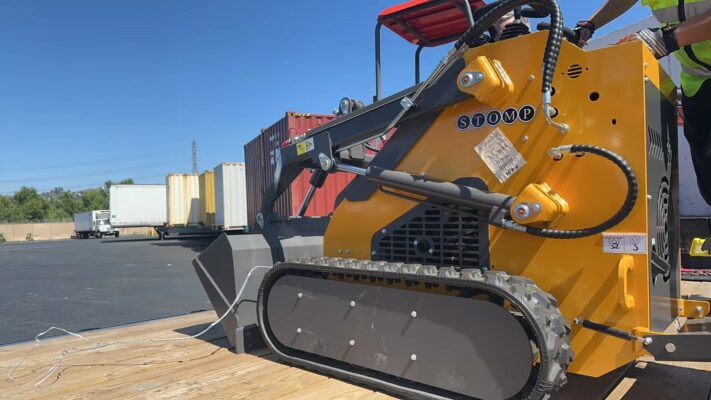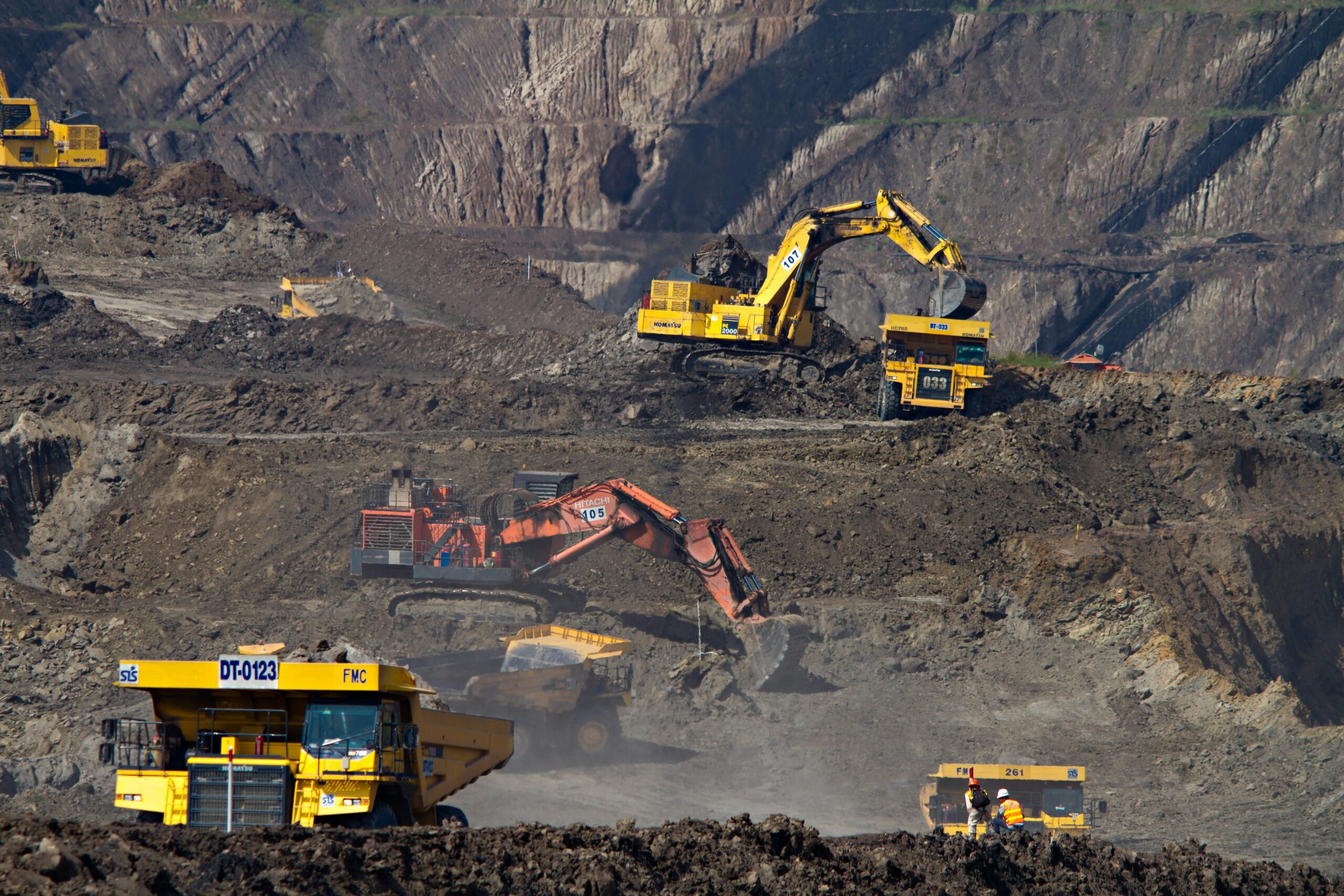Attachments, Construction and Landscaping, Construction Equipment, Excavator, Mini-Excavator, Skid Steer Loader, TYPHON Machinery
Skid Steers vs. Mini Excavators: Which Is Better?
Skid steers and mini excavators, both are the most popular and versatile construction equipment, small in size but mighty for being able to perform several operations. However, when it comes to choosing the best one, it depends. The relative advantages and disadvantages of each type of machine are outlined below.
this guide is to assist you in choosing the right one between a skid steer and a mini-excavator because it’s compulsory to compare the flexibility, mobility, power output and a simple difference in costs for skid steers versus mini excavators.
1. Versatility: Attachments and Applications
Possibly, the most critical aspect of skid steers and mini excavators is that each of them is compatible with a broad range of implements. These attachments enable the machines to execute several operations in addition to their inherent functioning.


Skid Steer: It is used for material handling, grading and lifting, and other applications with accessories such as buckets, pallet forks, and graders. When properly equipped with accessories like a snow blower, mulching engine, or hydraulic ripper, they are well suited for snow ploughing, land levelling, and even demolition.
Attachments:
The equipment includes buckets, augers, grapples, snow blowers, pallet forks, and graders.
Ideal for:
Transportation of material, sorting, construction tear down, and force majeure removal.
Mini Excavator:
While mini excavators are mainly used for digging and earth-moving activities, they can quickly dig trenches, foundations, and holes with and without additional attachments such as augers, trenchers, and rippers. While they complete fewer tasks than skid steers, their excavation performance is unparalleled in their operating segment.
Attachments: Buckets, augers, trenchers, breakers, and rippers were a consideration.
Finally, It is best suited for excavation, trenching, digging of foundations, and landscaping.
Verdict: If your projects include lifting, grading, or snow removal, then a skid steer will suit you perfectly. A skid steer and a mini excavator will be helpful compared to the other in an operation involving digging or earth-moving activity.
2. Maneuverability: Navigating Tight Spaces
Both machines are intended for navigation in confined areas; however, their flexibility directly depends on their structure and movement methods.
Skid Steer:
Skid steerers are versatile in that they can turn in places with zero radius turning and spin in one place. This makes them suitable for use where the working space is small or where slotting of the device is necessary at the workplace. Among them, some have four-wheel-drive or rubber tracks by which they can move across different types of surfaces, from paved and gravelled to construction rubble and sharp rock.
Strengths: Zero radius turn, excellent turn, ability to manoeuvre.
Limitations: It can damage sensitive ground or turf because of sharp turns.
Mini Excavator:
Mini excavators are typically lighter, take up less space, and have an extended arm to get into spots a skid steer can’t. It can turn 360 degrees and does not need to move its tracks, which makes it ideal, especially for working in areas where it is hard to move the machine around. They also have rubber tracks that cause less impact to the ground and thus are appropriate for use on grass or asphalt surfaces.
Strengths: Round turnaround, compact size, low impact on delicate surfaces.
Limitations: Less manoeuvrable than skid steers, particularly regarding the ability to transport themselves from one site to another.
Verdict: Skid-steer loaders are more versatile for projects with close-quarter operation and frequent synchronized movement. However, a mini excavator is a solution if you need a machine that you can manoeuvre in one location without having to relocate and does not disturb the surface significantly.
3. Power: Lifting and Digging Capabilities
Another factor influencing the choice between a skid steer and a mini excavator is power, which one must consider. Every one of them has some advantages in connection with power applications.
Skid Steer:
This is very flexible and heavy-duty when it comes to mobility and the handling of materials. In this company, the hydraulic systems are very robust and aim to handle big gravel, soil, or debris loads. But they could be more vital to deep digging or trenching.
Lifting Capacity: More material handling capacity with the right accessories.
Digging Power: Limited to such uses as levelling or other activities that may not involve any contact with the ground.
Mini Excavator:
Note that mini excavators are specially built for excavating purposes. They are strong, and their fluid power system allows for ground penetration more than a skid steer; they are thus suitable for making trench foundations, among other large holes. However, their lifting power is usually less than that of skid steers.
Lifting Capacity: Less than that of skid steers.
Digging Power: Rather suitable for making thinner and longer channels or grooves.
Verdict: In this case, skid steers are more appropriate because they can be used for events that require more pulling and lifting power for the present project. A mini excavator will do more digging work if digging, trenching, or foundation work are the main tasks to be done.
4. Cost: Purchase and Maintenance
Sometimes, people opt for specific equipment because of budget. The initial cost and the incurred cost in the future must be taken into account.
Skid Steer:
Skid steers are typically lower in price than mini excavators, even if they are lower in power and equipment options as well. However, they also indicate that the equipment may replace other more specialized and specific machines required at a particular construction site. Operation cost can further be determined by the severity of the task to be accomplished and the types of attachments to be used; notwithstanding, skid steers are relatively low cost and easy to maintain due to their simplicity in design and construction.
Purchase Cost: Usually less than mini excavators. Some mini excavators contain fewer products than others, and the prices consequently vary.
Maintenance: Moderate dependent on the level of usage intensity of the extension and the number of mail attachments.
Mini Excavator:
Mini excavators may be more costly initially based on the features or the horsepower of the mini excavator ever, but their operating costs could be lower over time because their main application is digging, which does not strain the machine as much as a skid steer would when lifting or levelling.
Purchase Cost: Higher initial investment.
Maintenance: Closely related, the utilization of excavators was lower during specific digging operations.
Verdict: A skid steer is cheaper than other models if the buyer’s primary concern is looking for an economical piece of equipment that is popular on the market. On the other hand, for projects that mainly involve scooping, the cost of owning a mini excavator could be offset by future cheaper maintenance costs.

Conclusion
In conclusion, whether or not to get a skid steer or a mini excavator, there’s one tactic you should imply, and this primarily depends on the tasks you need to cover. Skid steers also come with more flexibility to allow contractors who need to perform multiple tasks, such as grading, lifting snow, and landscaping. Because they come in handy with many attachments, they are popular in many construction sites.
Conversely, mini excavators are unrivalled, especially in digging and excavation projects. Because of their terrific digging ability, ability to work in narrow areas, and ability to rotate in the hole without changing their position, they are ideal in trenching, foundation work, and other related groundwork.
Lastly, both machines are very versatile, so you are advised to consider the properties of the problems you will solve if you choose one or another. If you need a machine that can perform multiple functions in a project, while fair in cost, with an accurate dig and move around then the Typhon Machinery skid steer by USA Excavators is the best option staying ahead of the rest of the market.

